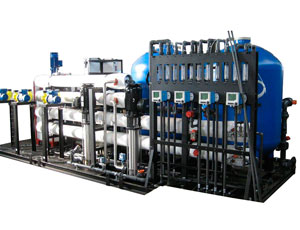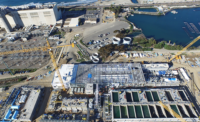
Desalination of seawater and brackish water is gaining a foothold in Africa as the continent seeks to increase freshwater not only to meet the demand from a surging population but also to replenish the diminishing supply caused by climate change. Several countries in Africa, especially in the northern and southern regions, have embarked on new desalination projects in recent years.
Various international providers of water-desalination solutions are turning to the African market for investment opportunities, including the construction of new plants under contracts from government or commercial water consumers.
By 2015, North Africa seeks to meet the coverage needs of 94% of its population, and sub-Saraha Africa seeks to meet the coverage needs of 75% of its population. Current coverage stands at 92% and 61%, respectively, for the North Africa and sub-Saraha regions. The African Progress Panel, an organization focused on the sustainable development of Africa, estimates that both regions need $2.6 billion to meet their current freshwater demands.
As the race to meet surging demand intensifies, U.S.-based Culligan International, Spain-based Abengoa, Paris-based AREVA, Switzerland-based Watersolutions AG, Spain-based Cadagua, France-based Veolia and Japan-based Sojitz are some of the water-treatment companies that have either won contracts, completed construction of desalination plants or installed modern technologies for the treatment of water.
For example, in October 2012, Ghana awarded a desalination-plant construction contract to a joint venture of Spain’s Abengoa and Japan’s Sojitz.
The $125-million project, the first of its kind in western Africa, involves the construction of a 60,000-cubic-meter-per-day desalination plant at Nungua. The plant design and construction will be done by Abengoa over a period of two years and, on completion, supply water to the cities of Teshie, Nungua and Tema.
“Abengoa will be responsible for the design and construction of the plant as well as subsequent maintenance and operation for a 25-year period,” says Patricia Malo Melendez, manager of corporate communications at Abengoa.
The Ghana project will increase Abengoa’s installed water-desalination capacity to nearly 1.2 million cu m per day and also generate an estimated $1.3 billion in revenues for the next 25 years.
Namibia, the world’s fifth-largest producer of uranium, also has shifted focus to seawater to meet the rising demand for water for its domestic and industrial needs.
The government has awarded Veolia subsidiary Aqua Services & Engineering a contract to upgrade and refurbish a 400-cu-m-per-day seawater desalination plant in Walvis Bay to increase potable water for domestic and industrial use.
Though on limited scale meant to off-load pressure on the national water-supply networks, desalination projects are also under way in Libya, Egypt and Angola by Culligan International through Culligan Europe, Middle East and Africa (Culligan EMEA).
In Egypt, Culligan is constructing two new brackish-water reverse-osmosis plants with a capacity of 300 cu m per day for multinational company Coca-Cola. The Spanish firm also is engaged in a seawater reverse-osmosis and brackish-water reverse-osmosis plant in Libya that has an estimated capacity of 600 cu m per day; in Angola, the firm is working on a similar plant that has a 650-cu-m-per-day capacity.
High water-desalination costs, operational expenditures and the high energy needs for some technologies have hampered widespread adoption of desalination to bolster freshwater supplies in Africa. However, that could be changing.
Companies that are established in Africa are promoting technologies they say will not only cut down costs but require less energy, which could put desalination projects within reach of countries that have scant financial resources and water supplies.
“The main problem is investment which, at times, is out of the government budget and also the need for skilled people to keep running the system,” says Franco Ferrari, general manager for Culligan EMEA.
To help Africa cope with the high cost of investment in desalination, Ferrari says Culligan, which generated up to 10% of its total revenues for Culligan EMEA from Africa, has installed reverse-osmosis plants. Culligan says reverse-osmosis technology is the most suitable for producing safe drinking water in Africa, Ferrari says. He says recent improvements to the technology has led to a reduction in capital and operational expenditures, making the process within reach of most countries.
Watersolutions AG's chief executive officer, Espen Mansfeldt, agrees that the high cost of constructing and operating desalination plants have complicated efforts to scale up projects.
“Current technologies are energy-intensive, expensive and complicated to operate,” Mansfeldt says.



Post a comment to this article
Report Abusive Comment